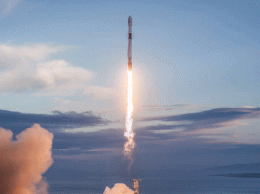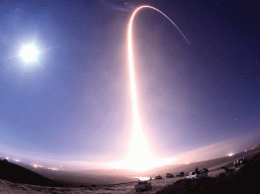An earth-imaging satellite arrived at Vandenberg Air Force Base July 28 in preparation for a September launch.
The WorldView-4 Satellite arrived at Vandenberg after being shipped 250 miles in a rolling mobile cleanroom from Sunnyvale. Lockheed Martin built the satellite, which will launch at about 11:30 a.m. Sept. 15 from Vandenberg’s launch pad SLC-3E.
The United Launch Alliance, a joint venture between Lockheed Martin Space Systems and Boeing Defense, Space and Security, will launch the rocket. DigitalGlobe, a Colorado-based imaging and data company, will operate the satellite once it reaches orbit.
Originally planned for the spring of 2013 and named GeoEye-2, the satellite’s launch was delayed three years because of a merger between two competitors. In January 2013, DigitalGlobe and GeoEye merged operation of the independent fleets of imaging satellites.
At the time though both companies were developing similar imaging satellites, so the company had to effectively wait until the market demanded more imaging services from DigitalGlobe.
After the merger, the company decided to launch DigitalGlobe’s WorldView-3 satellite because it also was designed with short-wave infrared bands that can penetrate airborne particulates like fog, haze, dust or smoke.
Once in its 400-mile high orbit, WorldView-4 will map an area of 263,000 square miles each day, which will double the area of WorldView-3 maps. The satellite is also designed to see objects just 1-foot wide.
WorldView-4 will also be carried into orbit by a rocket once destined for Mars. In March, the Atlas V Rocket, known as AV-062, sat on the pad at Vandenberg in December, waiting to haul the Insight Lander to Mars.
The Insight Lander, which stands for Interior Exploration using Seismic Investigations, Geodesy and Heat Transport, intended to land on Mars and drill into the planet to study Mars’ geological evolution.
NASA planned to launch the Insight Lander from Vandenberg in mid-March, and the probe arrived at Vandenberg as preparation for the mission continued. A last-minute vacuum leak in the probe’s seismometer pushed the launch back to May 2018, when the next launch window to Mars opens.
Launch delays are expected to cost about $100 million.
• Contact Philip Joens at pjoens@pacbiztimes.com






 Print
Print Email
Email

















